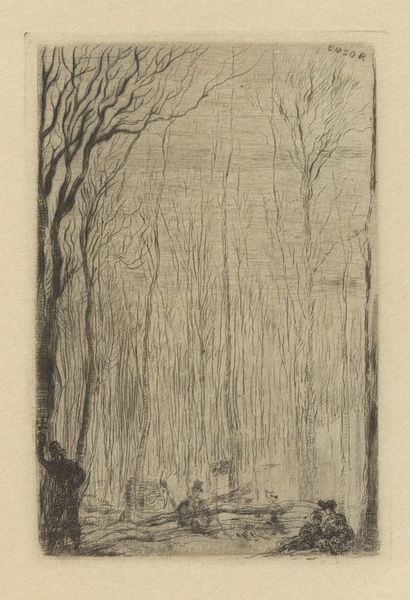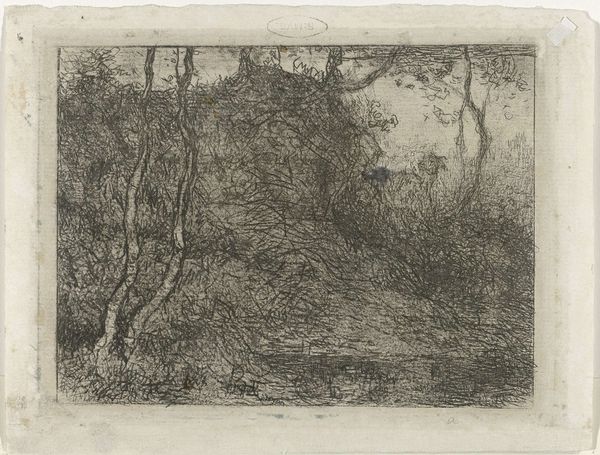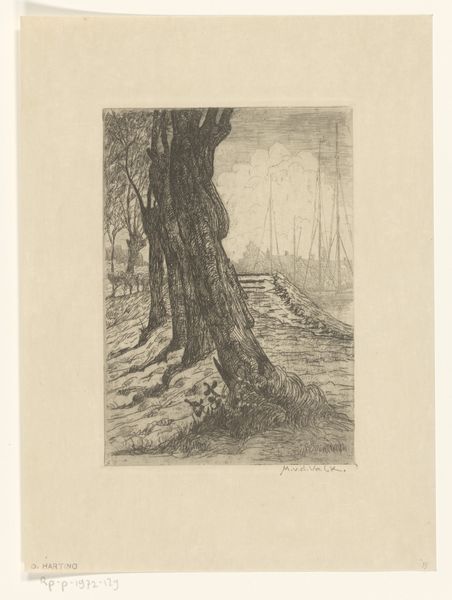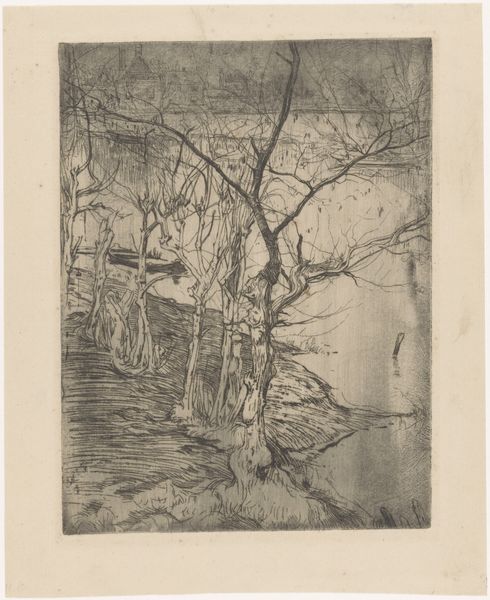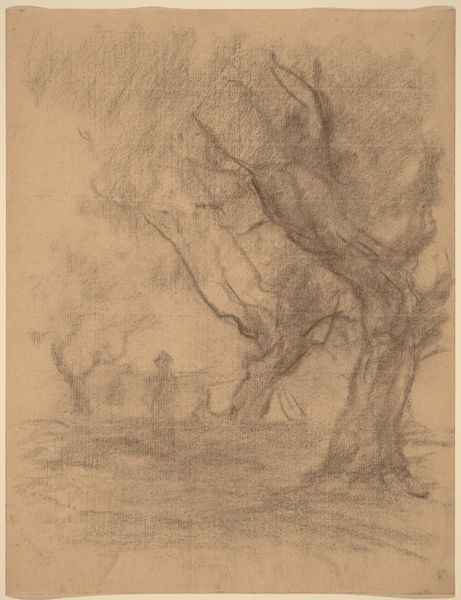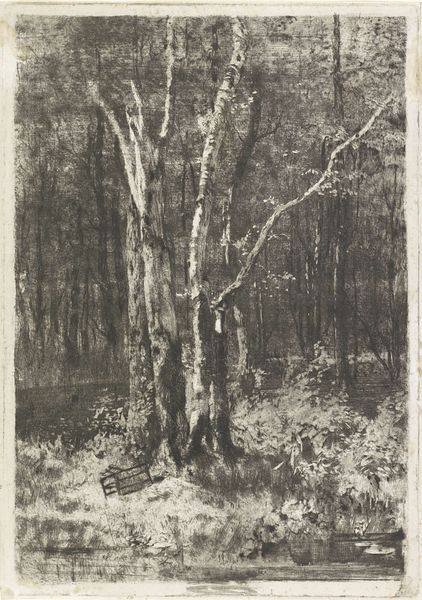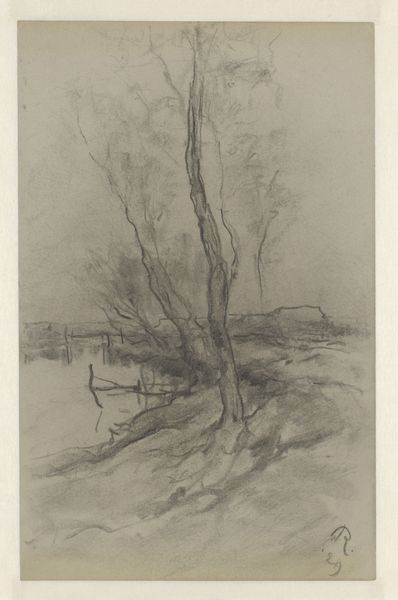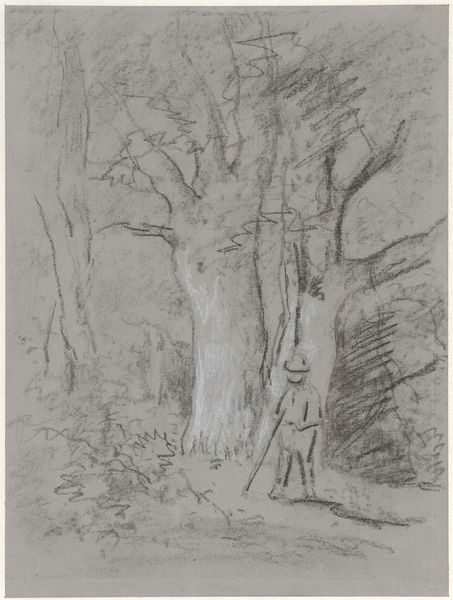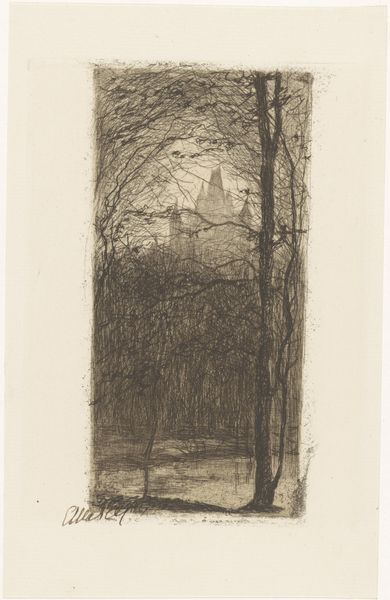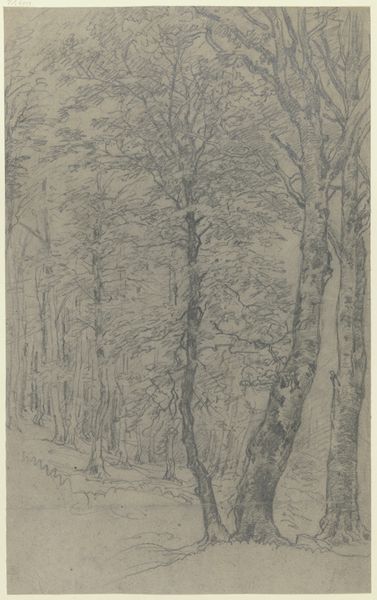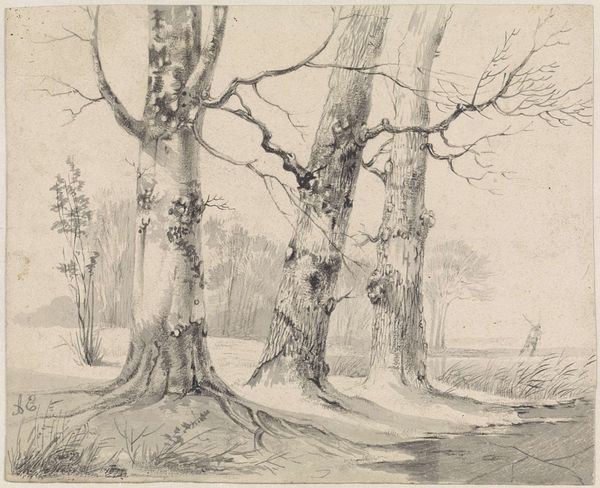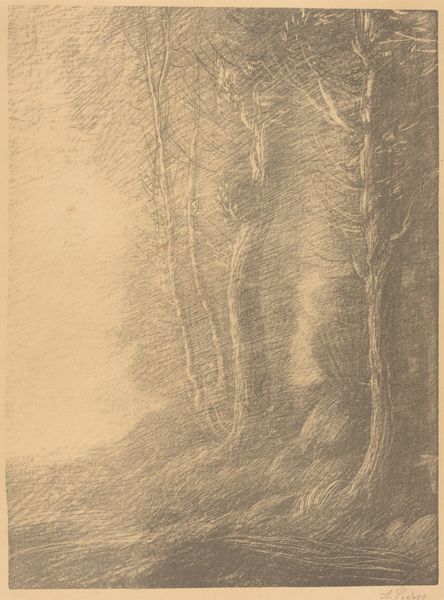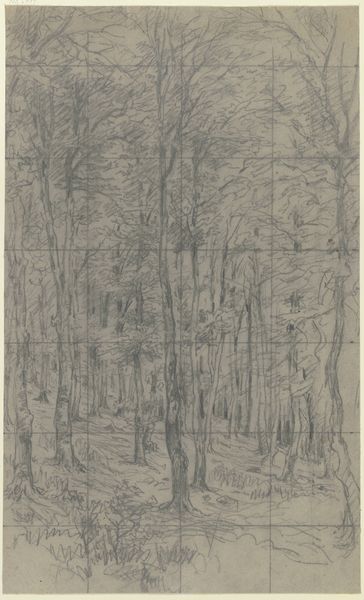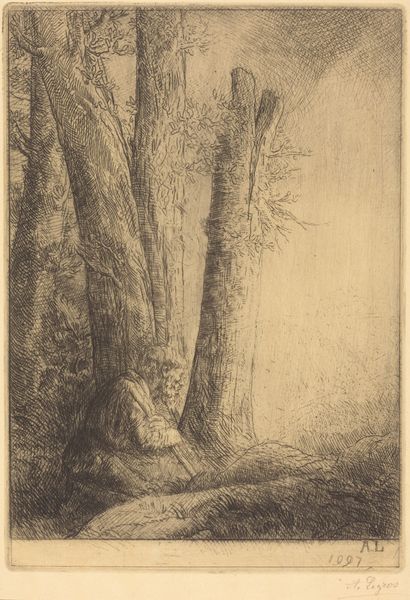
drawing, pencil, graphite
#
pencil drawn
#
tree
#
drawing
#
dutch-golden-age
#
impressionism
#
pencil sketch
#
landscape
#
forest
#
pencil
#
graphite
Dimensions: height 308 mm, width 190 mm
Copyright: Rijks Museum: Open Domain
Curator: At first glance, this delicate graphite drawing strikes me with its melancholic mood, almost a wistful observation of a fading natural world. Editor: Indeed, there's a somber beauty to it. This is "Trees in a Forest," a graphite drawing by Willem Maris, likely created between 1854 and 1910. I find it interesting how Maris used such a common material, pencil, to render what he found outside the city. It asks the question of the function of this particular labor and its intent. Curator: Maris lived through a period of massive industrial and social upheaval. Forests, once central to everyday life, were diminishing in significance. I wonder if this drawing acts as both a record and a commentary on this societal shift, framing a very popular art historical subject – landscape. Editor: You know, examining the pencilwork itself, the labor...it's quite revealing. Note the varying pressure, creating depth and atmosphere. The strokes are quick, almost gestural. To me this isn't a meticulous rendering of trees so much as it's an exploration of pencil itself—its texture and tonal range as tools of observation and, quite possibly, consumption. How many pencils did he have available? Who made them? Curator: That’s an excellent point. Consider also how Maris is positioned within the art market. Landscapes had become incredibly popular amongst the rising merchant class, which he would cater to through the Goupil gallery, a highly influential player in establishing Impressionism's prominence, and through whom Maris cultivated relationships with key art collectors and patrons who validated his market worth. This gallery shaped not only Maris’ practice but also dictated how he engaged the socio-economic landscape surrounding art production. Editor: The pencil, then, becomes not just a tool, but a signifier of his status within the shifting landscape of art production, the gallery a locus of the commerce. Curator: Precisely. In the end, these weren't mere landscape studies for Maris, but calculated commodities deeply embedded within specific social, artistic, and political structures. Editor: A simple sketch, then, offering an intimate glimpse into not only the woods, but the world of materials and commerce around the art of observation.
Comments
No comments
Be the first to comment and join the conversation on the ultimate creative platform.
